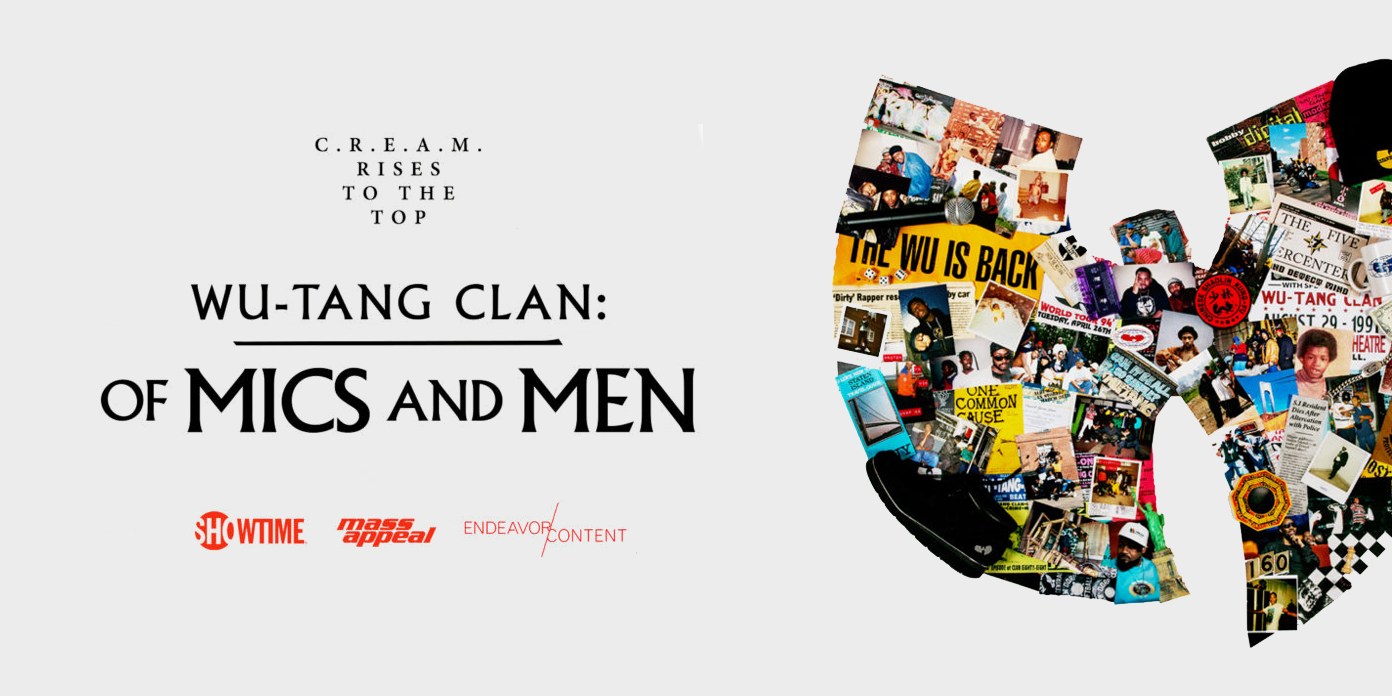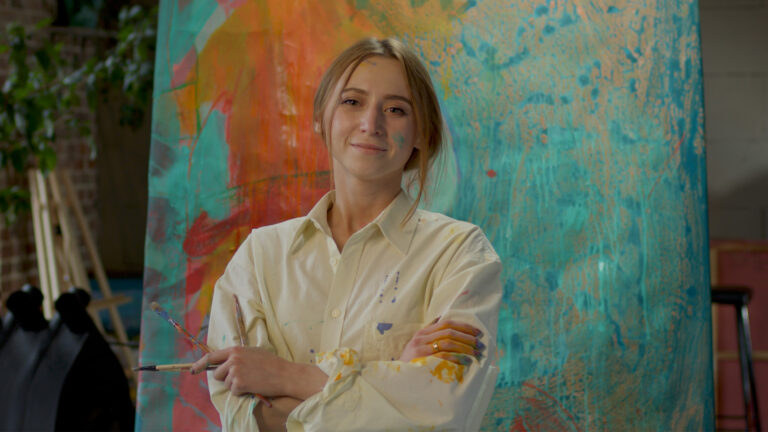Given their unique artistic style, hardcore fan base, and significant influence across the music industry, not just anyone could be entrusted to tell the story of the Wu-Tang Clan. It is perhaps no surprise that when it came time to make a documentary about the arc of their career, it was acclaimed creative agency Mass Appeal and their team that got to be the ones to do it.
Led by director Sacha Jenkins, the four-episode Showtime original docu series Wu-Tang Clan: Of Mics and Men illuminates the journey the rappers took through new interviews and never-before-seen archival material of their youth and ascent. The footage is remarkable, but so is the way it’s presented. The documentary features remarkable storytelling throughout its four episodes, storytelling that earned it an Emmy nomination for Outstanding Writing for a Nonfiction Program.
We spoke with senior director of post-production and technology Nicholas Pacchiano about how Mass Appeal met the technical requirements of the documentary head on. We also spoke with lead editor Paul Greenhouse about pulling the project’s extensive footage all together in an effective structure.
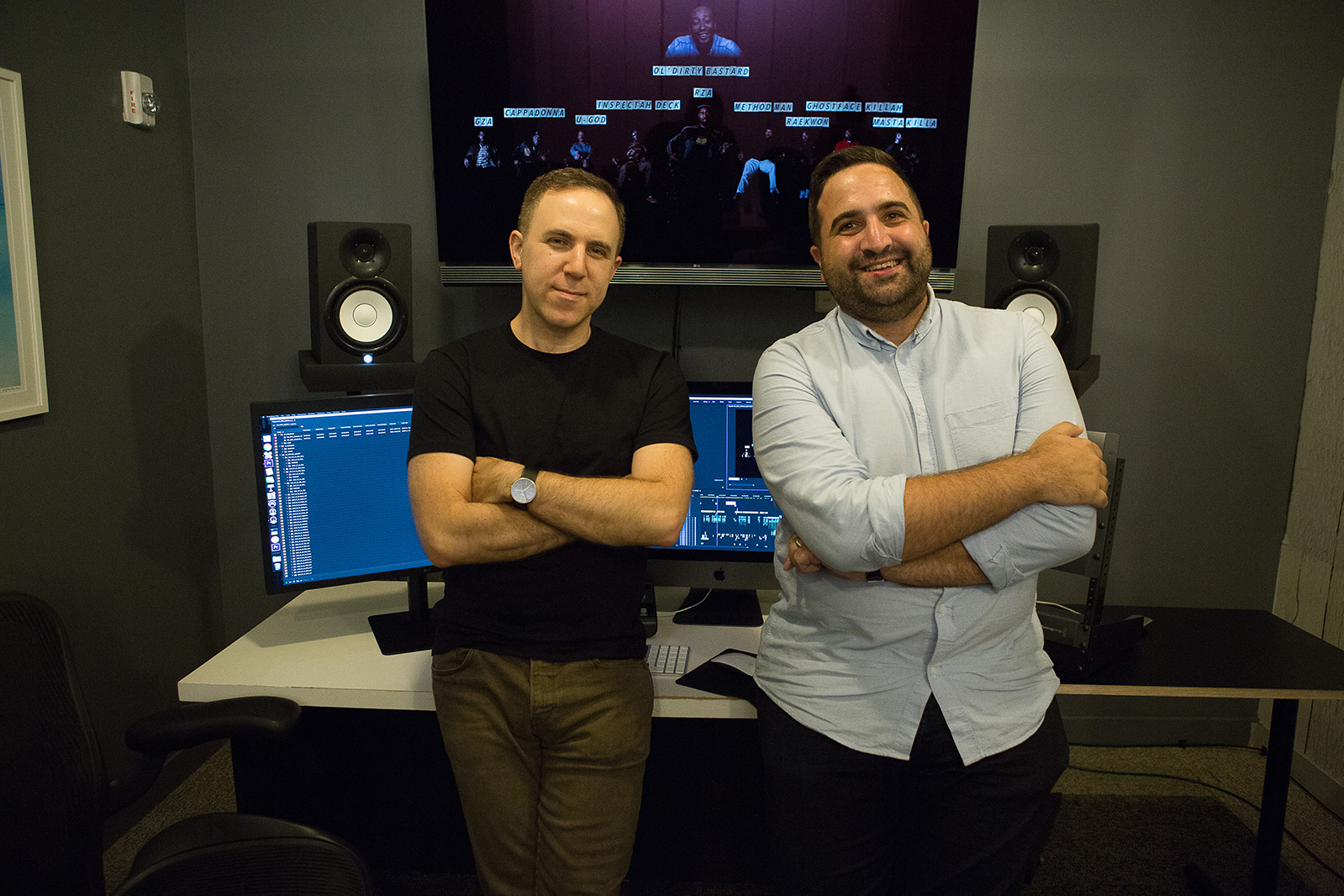
Paul Greenhouse (left) and Nicholas Pacchiano Paul Greenhouse (right)
Tackling the storage challenges of Wu-Tang
Making an archive material-heavy documentary like Wu-Tang: From Mics to Men wouldn’t be without its post-production demands. Mass Appeal knew that and prepared accordingly.
“The first thing we did was remodel all our edit rooms to be more convenient and more comfortable for the editors,” Pacchiano says. “The second thing we did was upgrade all the edit stations to iMac Pros fully loaded with memory, broadcast monitoring, client monitoring, and proper lead-out speakers too, so that it could be a collaborative environment like a traditional edit room,” Pacchiano says. The workstations were also equipped with Adobe Premiere Pro (for its dynamic linking to After Effects) and G-SPEED Shuttle drives.
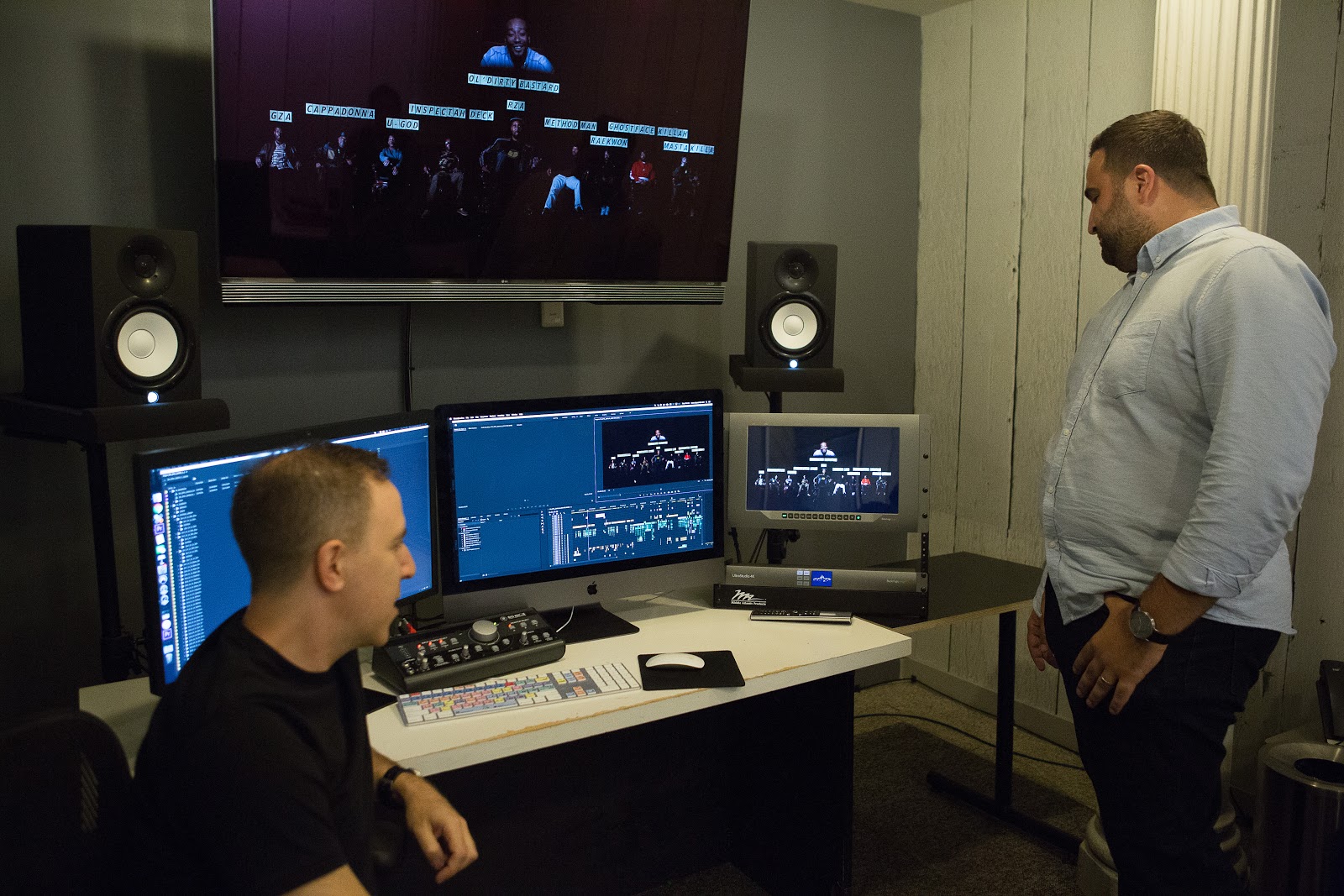
One needed upgrade didn’t become apparent until work on the project began: storage. They always counted on the use of archival material but hadn’t anticipated how much there would be. That soon became clear as it was being ingested by the team’s archival producers, including numerous boxes of VHS and Hi8 tapes. Despite having several ingestion stations, it wasn’t enough. “We started hearing complaints from our assistant editors that they’re not digitizing fast enough,” Pacchiano says.
There were also the new interviews with the Wu-Tang Clan members coming in, shot on Red Weapon Helium (16:9 HD, 5760×3240, 23.98, 6:1), which required space among a dwindling reserve. “We realized we didn’t really need to shoot everything at 7.5K, so we made sure that we shot everything at around 6.5K instead. This saved us a lot on storage, but somehow we still ended up with roughly the same amount of media storage that we shot for an eight-part series, but this was only a four-part series,” Pacchiano says.
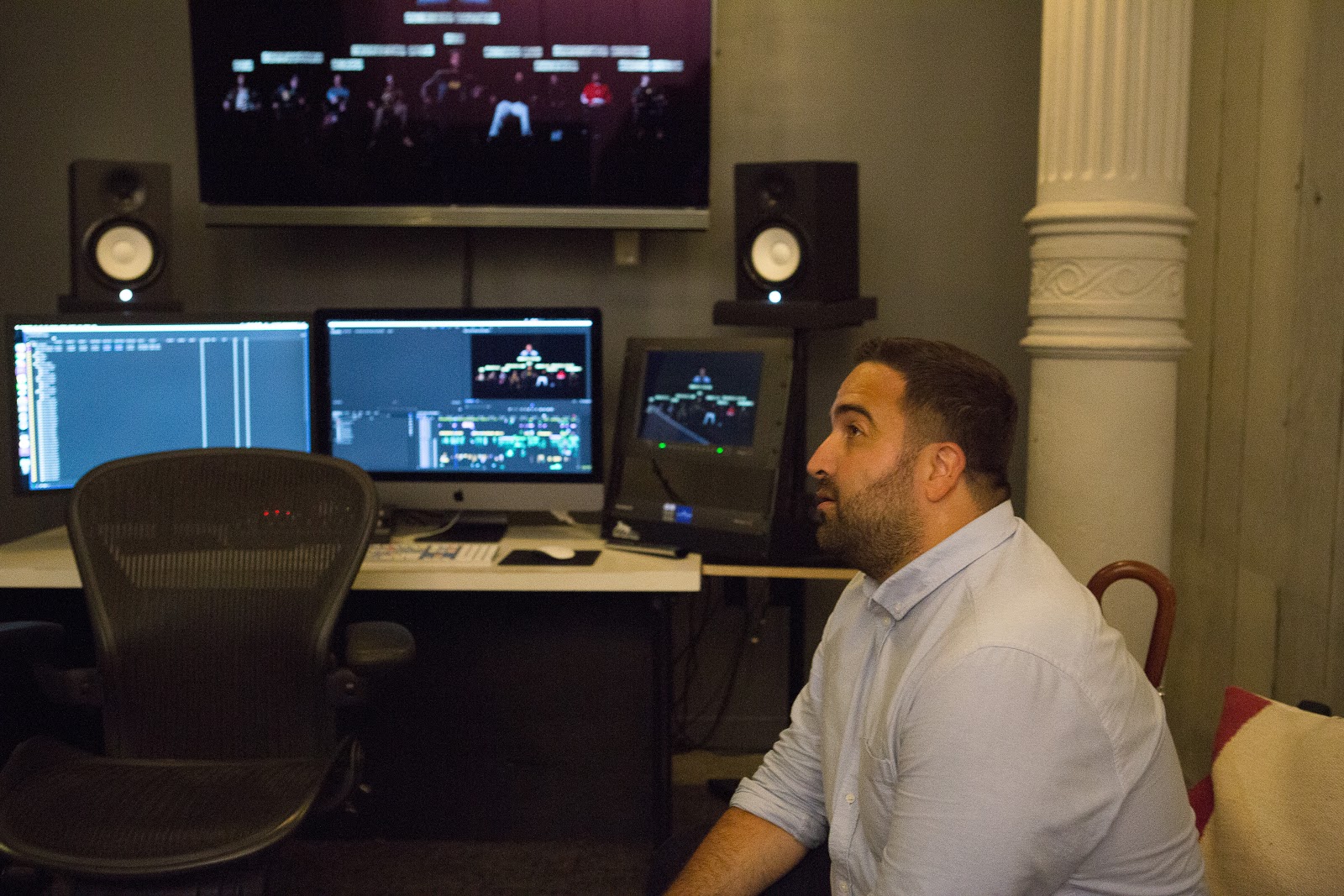
The decision was then made to upgrade to half a petabyte of shared storage and adjust the workflow. “Once I saw the volume of the footage that was coming and that our numbers were going a lot higher than expected with our shooting ratio, I realized that we needed to do things with a 1080p proxy workflow.”
“…somehow we still ended up with roughly the same amount of media storage that we shot for an eight-part series, but this was only a four-part series.”
Nicholas Pacchiano
That decision wasn’t a difficult one. “It’s part of my philosophy, and Mass Appeal’s philosophy, to make sure that we have a stable foundation so our creators can evolve the storytelling,” Pacchiano says. “I always want that safety net there for our creators, and that’s where the technology helps.”
The tech, team, and organization
The offline workflow involved using ProRes Proxy 1080p at 23.98 FPS. Each of the teams edit rooms were stocked with iMac Pros, spec’d with 14-core Intel Xeon W processors (Turbo Boosted up to 4.3 GHz), 128GB of 2666Mhz DDR4 ECC RAM, a 1TB SSD as the system drive, and a Radeon Pro Vega 64 GPU. Each suite also used external 27” LG UltraFine monitors, as well as 55” LG UHD Smart OLED TVs. And to complement this high-end visual experience, the audio system consisted of a pair of Yamaha HS7 powered studio monitors, controlled by a Mackie Big Knob.
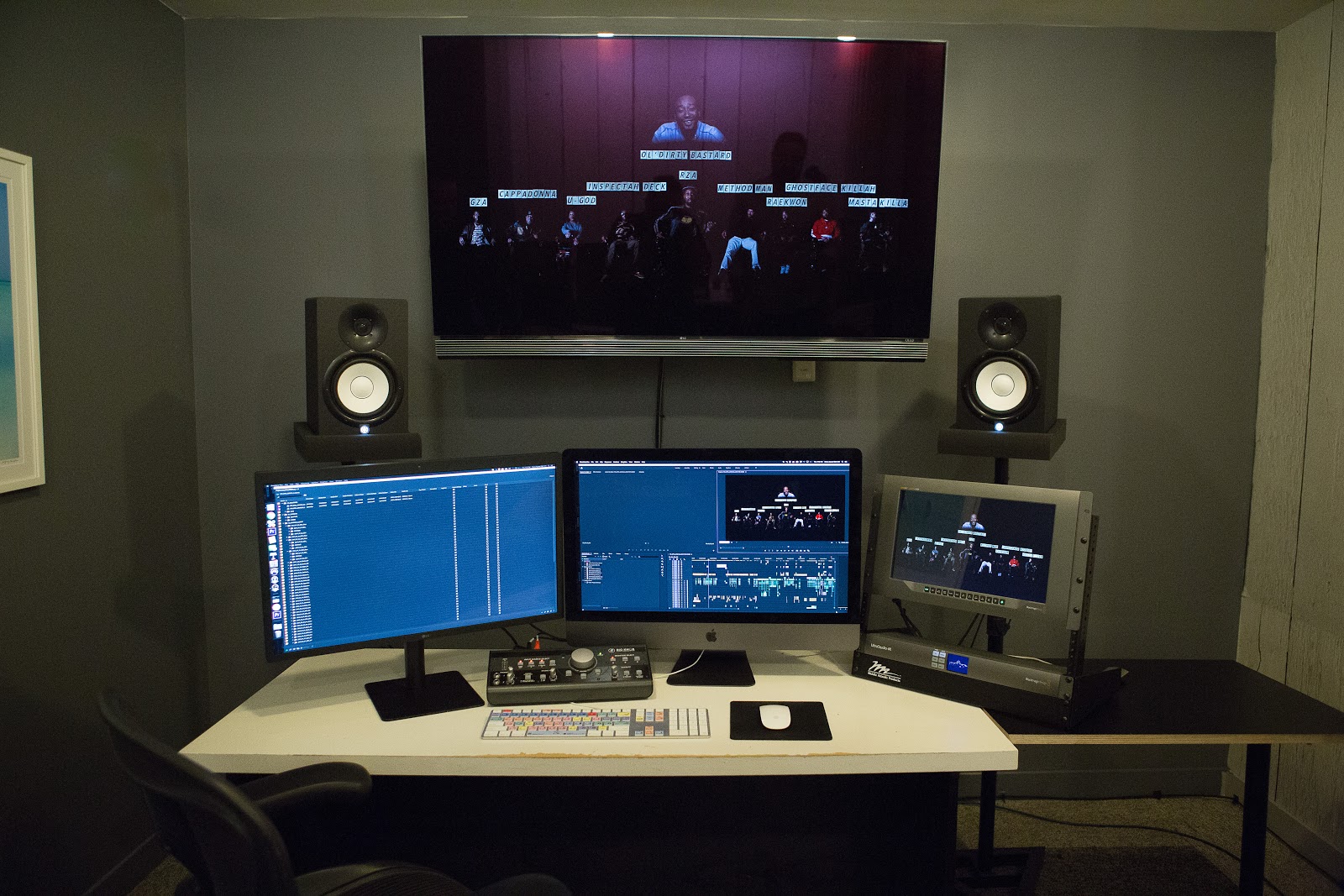
They also had an extensive editing team to assist them. Sean Frechette, Ephraim Kirkwood and James Lester received “Edited by” credits. Gordon Grinbeg was an additional editor. Contributing editor was Kathryn Moore. Lead assistant editor was Will Garofalo, along with assistant editors Ephraim Kirkwood, Mark Scherel, and Sarah Phoenix.
With half a petabyte worth of storage being used up, the team had to be diligent about not getting snowed under. “There was a lot of organization constantly going on between the AEs, the editors, and Nick, just trying to keep up with everything, keep it in a way that was manageable,” Greenhouse says. “It became a lot to wrap your head around.”
The majority of the archival material being shot and ingested was sorted by the assistants and placed within a master archival bin, that was also broken down by location. (“So there’s Staten Island-specific or even Park Hill-specific media versus media regarding the time Wu-Tang spent in Los Angeles,” Greenhouse explains.) Bins were also used to organize footage by theme and character, though not so strictly that there wasn’t overlap sometimes. “A piece of media might exist in an O.D.B. bin, that also exists in a RZA bin,” says Greenhouse.
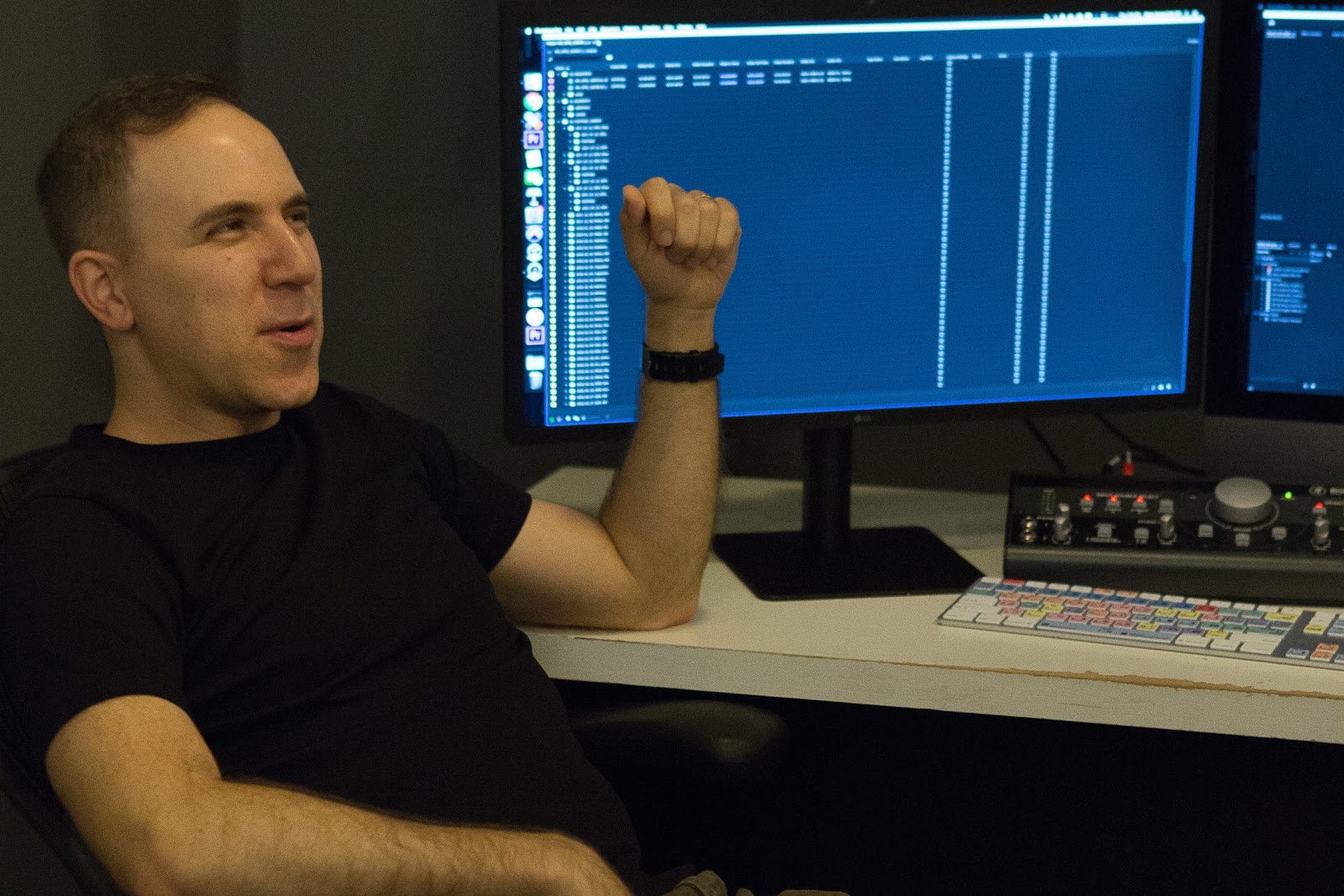
Beyond bin organization, the new master interviews were also made more easily accessible through searchable transcripts. When the interviews were transcribed, the result would be synched to video using Transcriptive from Digital Anarchy. That was especially helpful as the project had moved along and Greenhouse had to find specific materials to complete scenes. “I had nine primary storytellers who all had extensive, long interviews. I needed to go revisit, and look for specific ideas that were discussed. Being able to do keyword searches on the transcript and Link it to the video [was vital],” Greenhouse says.
Whiteboard structuring
Media organization wasn’t just important for project organization, but narrative organization. To help do that, the edit rooms at Mass Appeal had white boards to help work through the structure. “We did a lot of work on a wall, just talking through the story of each episode, and that would be done as a group,” says Greenhouse. That process was so collaborative within the Mass Appeal offices, that the stretch of rooms they were using to work on the documentary, ended up being called “Wu Alley” by director Peter Scalettar.
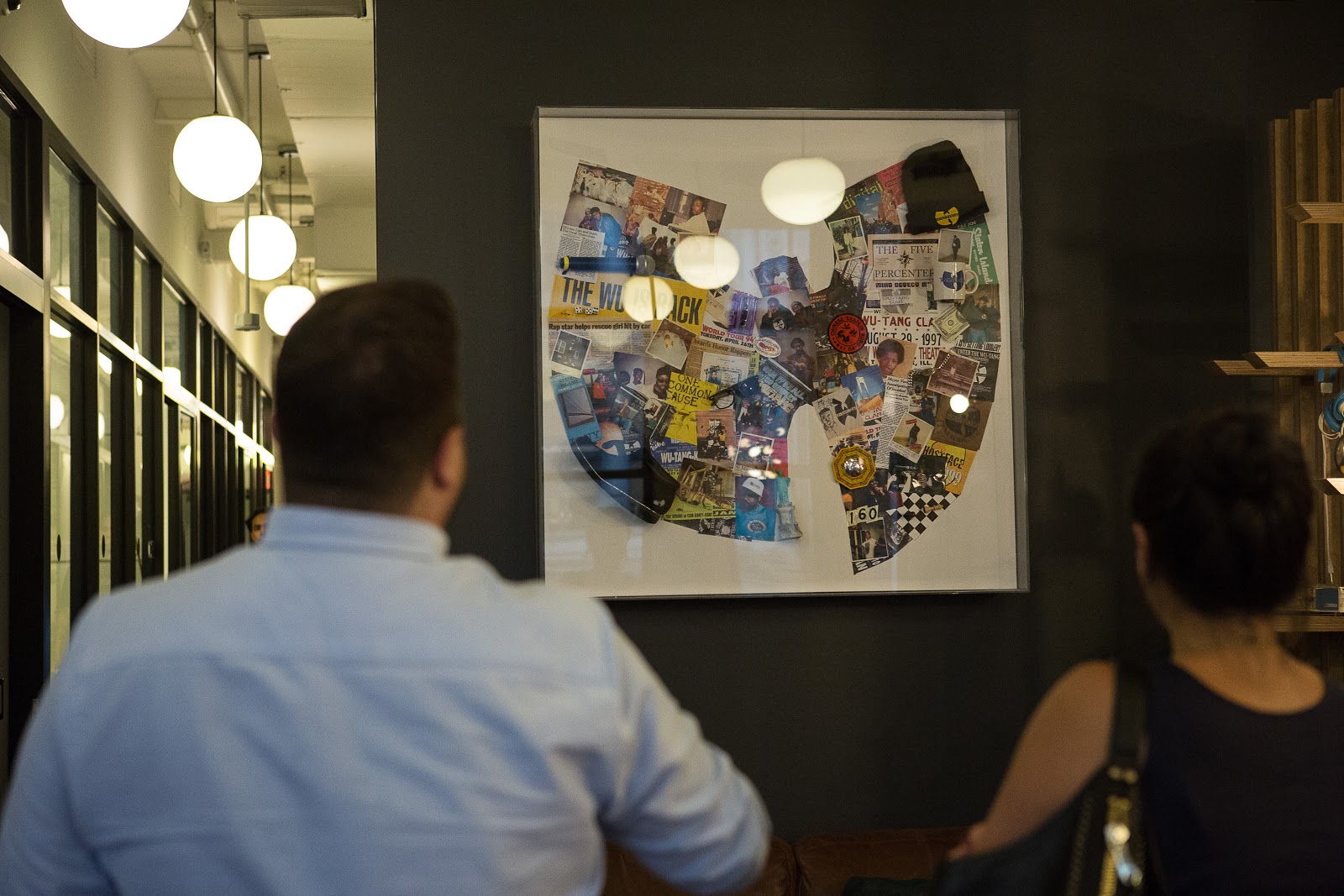
Early on, the team used the master interviews to structure around because roughly 70 to 80 percent had been shot when editing began. However, the quality and volume of the archival material changed things, as did the rare openness of the Wu-Tang members during their interviews. The white board went into action to determine a structural solution that would neatly organize material into intuitive episodes. Their solution? “It felt like we needed to structure an episode around one conflict that could tie a lot of the ideas together,” says Greenhouse.
The result: “Those were ideas that came through conversation, going through the material, and trying to work through the story on the whiteboard,” he says. “Giving ourselves that structure to work within, because of the vast amount of material that we had, it helped us really hone in on the sequences that we wanted to build. It helped us schedule the edit, because we could give ourselves assignments. We knew which sequences would fit into which storyline, and we were more targeted with our work once we had a roadmap.”
Who gets to tell what story?
Structuring and organization isn’t just a consideration to help the creative process, but also for the end goal: the audience. For example, how do you wrestle with such a large cast of characters? That became a question right from the series’ opening minutes.
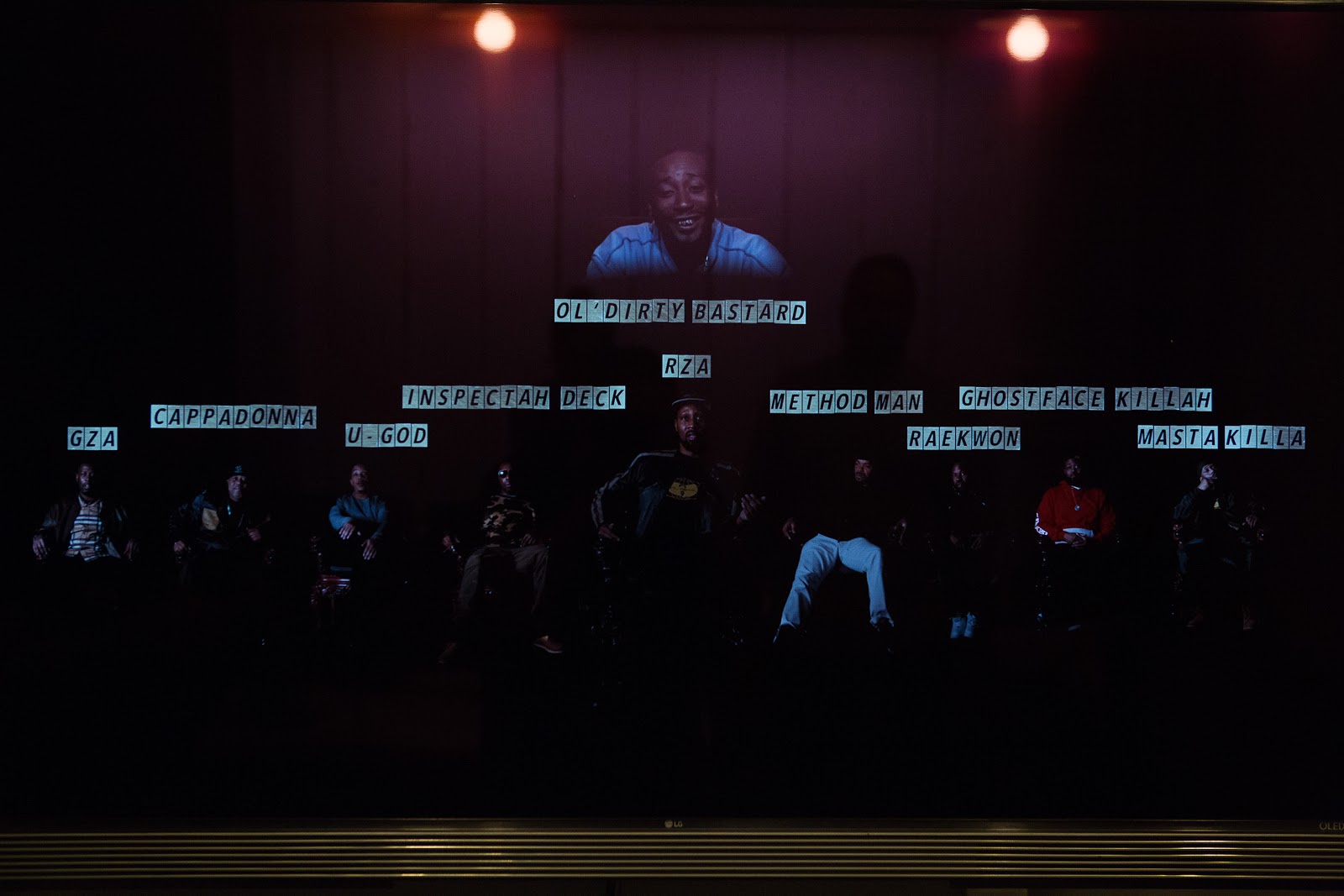
“The first sequence that opens the film, was something that we went through numerous revisions on, because there was a version where we tried to spend more time meeting each member in the first couple of minutes. And it’s hard. You’re wondering, as an audience, are you going to be able to retain all this information?” Greenhouse says. “We decided to break it out, and so there’s a quick list, and you see everyone up at the top, and then you get a little more information about specific members staggered throughout, I would say the first 15 minutes of the first episode.”
Decisions were also made about who of the Wu-Tang Clan was best suited to speak to convey a part of their history. “There were times when we decided to tell certain stories with an ensemble, and then other stories just let one voice tell it. Usually, it was the person who told it in the most compelling way, or the person who was most invested in that moment,” Greenhouse says. Sometimes that moment wasn’t even best conveyed by a master interview, because there was so much archive material to draw from.
“We generally tended to make decisions where, if you could watch them in the moment in archival, it sometimes felt more compelling than hearing them talk about it in the interviews that we’d done. For example, there’s a sequence for their second album Wu-Tang Forever, which was something that people spoke about in their master interviews. But then we got archival material where RZA’s in the studio, and they’re going into mastering, and he’s talking about the record there directly to camera, so we ended up using him there in archival.”
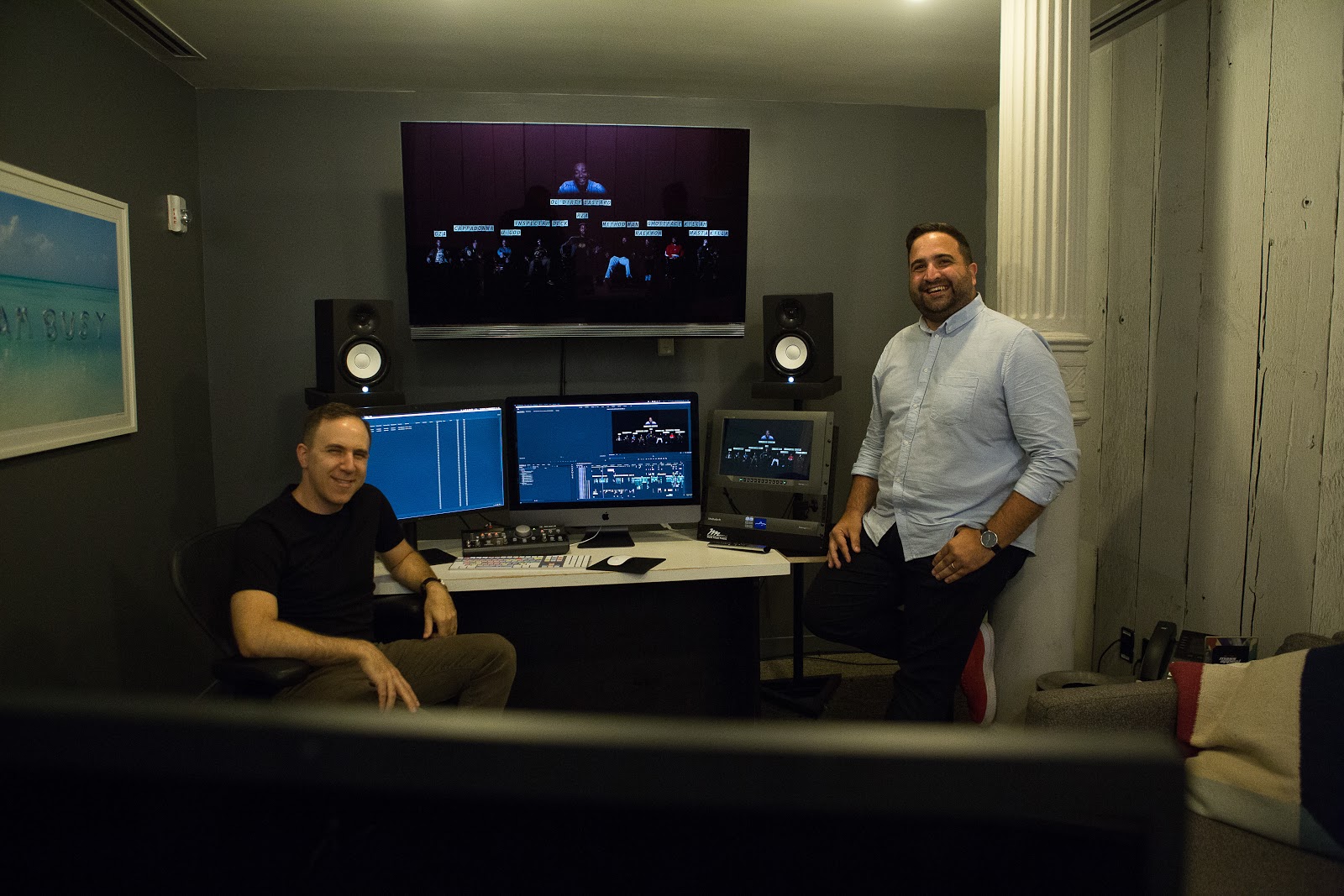
There is something emblematic in that. Without the tech (adequate storage space and editing hardware) or the creative process (the team and organization), the story would have been hard to tell. But the Mass Appeal team’s organization enabled them to see it through to the end. “We knew that this one three-minute sequence would be key to the hours and hours of other material, so it had to be done right. But that’s really the purpose of organization, and bins, and outlining, and everything. To make the story more manageable. So we focused on the smallest sections first, one at a time, and that tied the whole package together” Greenhouse says.

